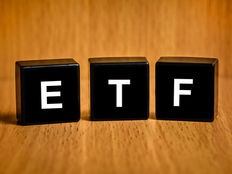
Municipal bonds are worth considering for any investor aiming to conserve capital while receiving a tax-free revenue source. The bonds–"munis" for short–consist of debt obligations issued by local governments.
Essentially, if you buy a muni bond, you are lending money to the government in return for a promise that the government will pay you back with interest. Local governments then use this money to improve their infrastructure, the education in their area and so forth. As local governments rarely default, muni bonds are seen as some of the safest investments. Additionally, since municipal bonds are tax-free, they offer considerable tax advantages [for more muni bond analysis create a free account today].
By offering what is in effect instant diversification, municipal bond ETFs have found a ready-made market. These ETFs comprise upwards of hundreds of muni bonds. Furthermore, if you are looking for a recurring revenue source, a bond ETF may very well be the solution. Currently there are more than 30 ETFs that focus on munis, with many focusing on particular duration ranges, geographies and credit quality.
Advantages of ETFs

With this innovative investment vehicle comes a number of advantages:
- First, expense ratios are much lower in comparison to managed funds. Most fund managers make a lower return than the market, so why not invest that money yourself into a market index and match the market with minimum fees?
- Second, there are no investment minimums. You can buy one share or 1 million, it is up to you and your budget.
- Third, you can buy them on margin or sell short. If you change your mind you can sell instantly. Mutual funds or other managed funds typically have locked-in holding periods.
- Lastly, dividends are reinvested immediately. With managed funds the timing can vary.
Additionally, the professional management of a bond fund may be attractive to you if you find selecting your bonds to be intimidating.
Disadvantages of ETFs
Investors typically compare ETFs to other forms of managed funds. In this regard, ETFs do have a lot of advantages. However, there are a few disadvantages to consider – especially when comparing an ETF to an individual stock or bond:
- First, an ETF may not have as high of a dividend yield as a certain stock.
- Second, there is no management fee paid to own a stock, so costs of owning an ETF may be higher.
- And last, low trading volumes on certain ETFs can lead to a bid-ask spread that is too wide, making owning an index or equity much more attractive.
Investors should be wary when consulting their financial advisor about exposure to bonds; for many advisors, it is much easier (and more profitable) to simply recommend a bond fund than it is to assist their clients in selecting bonds one at a time. It is important to receive sound investment advise from an advisor who has your best interests in mind.
Municipal Bonds in ETFs

Before investing, investors should decide if munis are right for their portfolio. During the credit crisis of 2008 and the recession in 2009 and 2010, the municipal bond market received a lot of negative headlines. Municipalities such as Pennsylvania and Alabama defaulted on their muni bond obligations, and California ran deficits that made others wonder if that state would be next. Muni bonds are also at the mercy of the tax code. If a proposal goes through to take away the interest deduction benefit, then the cost to local tax-payers and the government will increase.
However, muni bond ETFs will draw appeal among baby boomers and those around that age because the volatility is lower than other asset classes. Furthermore, muni bond ETFs provide a steady, tax-free income stream. Many municipal bond ETFs pay out their dividends monthly rather than semi-annually, as do individual muni issues.
Safety and Tax Advantages of Munis
The likelihood of a rated municipal bond defaulting is also negligible. From 1970 to 2011, Moody’s showed that only 71 defaults occurred for rated debt. This is out of a $3.7 trillion market consisting of nearly 55,000 issuers. Unrated municipal bond debt tends to be riskier, but that is just the nature of the system.
Moreover, in regards to the tax code, during the past 100 years the government has decided not to tax interest on tax-exempt muni bonds. In all likelihood, it is not likely to do so in the future.
Investing in Muni Bond ETFs

Owning a portfolio of bonds will give you more control over the timing of maturities and allow you to maintain control as to how reinvest the interest received. When you are buying a bond fund, you are buying a portion of a portfolio of bonds, but you do not get the principal back at a certain date. As a result, you will ultimately exit the bond fund at the fund’s Net Asset Value at some point in the future, which is not guaranteed.
High-Yield Muni Bond ETFs
High-yield bonds are almost always popular with investors. Investors should note, however, that with higher yields often comes higher levels of risk. But for those risk-tolerant investors, here are two high-yielding ETF options:
| Ticker | Name | Expense Ratio |
|---|---|---|
| HYD | Market Vectors High Yield Municipal Index ETF | 0.35% |
| HYMB | SPDR Nuveen S&P High Yield Municipal Bond ETF | 0.50% |
All-Term National Muni ETFs
For investors who want exposure to a wide range of municipal bonds covering multiple durations and geographic regions, there are three primary options:
| Ticker | Name | Expense Ratio |
|---|---|---|
| MUB | iShares National AMT-Free Muni Bond ETF | 0.25% |
| TFI | SPDR Barclays Municipal Bond | 0.23% |
| XMPT | Market Vectors CEF Municipal Income ETF | 1.65% |
Target-Duration Muni Bond ETFs
Duration is a key consideration for bond investors, not least for its importance in predicting the sensitivity of a bond to future changes in interest rates. Many investors use duration as a key factor in weighting their fixed income allocations, and there are many municipal bond ETFs targeted around particular duration ranges.
- Short Term
Investors looking to the short end of the duration spectrum have four options:
| Ticker | Name | Expense Ratio |
|---|---|---|
| SHM | SPDR Barclays Short Term Municipal Bond ETF | 0.20% |
| SUB | Short-Term National AMT-Free Muni Bond ETF | 0.25% |
| SMB | Market Vectors Short Municipal Index ETF | 0.20% |
| SMMU | Short Term Municipal Bond Strategy Fund | 0.35% |
- Intermediate
There are only three ETPs in the intermediate-term fund category, which features nominal maturities of six to 17 years:
| Ticker | Name | Expense Ratio |
|---|---|---|
| ITM | Market Vectors-Intermediate Municipal Index ETF | 0.24% |
| MUNI | Intermediate Municipal Bond Strategy Fund | 0.35% |
| GMMB | Intermediate Municipal Bond ETF | 0.42% |
- Long Term
There is only one long-duration ETF for investors:
| Ticker | Name | Expense Ratio |
|---|---|---|
| MLN | Market Vectors-Long Municipal Index ETF | 0.24% |
- Target Date
For investors who wish to be even more particular about maturities, the iShares’ lineup of target maturity-date funds may be an appealing option:
| Ticker | Name | Expense Ratio |
|---|---|---|
| MUAD | iShares 2015 AMT-Free Muni Term ETF | 0.18% |
| MUAE | iShares 2016 AMT-Free Muni Term ETF | 0.18% |
Build America Bond ETFs
Build America Bonds are special taxable municipal bonds that were brought into existence through the 2009 American Recovery and Reinvestment Act. While these bonds are different in that they are taxable, they do carry special tax credits and subsidies:
| Ticker | Name | Expense Ratio |
|---|---|---|
| BAB | Build America Bond Portfolio | 0.27% |
| BABS | SPDR Nuveen Barclays Capital Build America Bond ETF | 0.35% |
State-Specific Muni Bond ETFs
As California and New York are two of the largest states in the U.S., it is not surprising that they issue a large number of municipal bonds. Both of these states also have large populations and large state and local tax burdens, giving investors in these states even more reason to consider municipal bonds:
| Ticker | Name | Expense Ratio |
|---|---|---|
| CMF | iShares California AMT-Free Muni Bond ETF | 0.25% |
| CXA | SPDR Barclays California Municipal Bond ETF | 0.20% |
| PWZ | Insured CA Municipal Bond Portfolio | 0.28% |
| NYF | iShares New York AMT-Free Muni Bond ETF | 0.25% |
| PZT | New York AMT-Free Municipal Bond Portfolio | 0.28% |
| INY | SPDR Barclays New York Municipal Bond ETF | 0.20% |
Pre-Refunded and Insured Muni Bond ETFs
Pre-refunded and insured muni bond ETFs offer investors lower-risk alternatives:
| Ticker | Name | Expense Ratio |
|---|---|---|
| PRB | Market Vectors Pre-Refunded Municipal Index ETF | 0.24% |
| PZT | New York AMT-Free Municipal Bond Portfolio | 0.28% |
| PZA | National AMT-Free Municipal Bond Portfolio | 0.28% |
The Bottom Line
At the end of the day, it is up to the investor to determine if muni bonds are right for their portfolio. If they are, investors should certainly consider ETFs as an efficient and low-cost option. The long-term impact on an investor’s income stream will be well worth it. This is especially true for retirees, people in high income tax brackets or people looking for a steady income stream.
Disclosure: No positions at time of writing.






